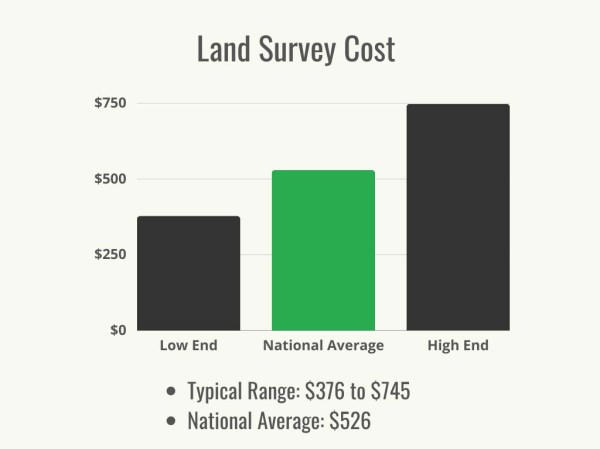We may earn revenue from the products available on this page and participate in affiliate programs. Learn More ›
When buyers begin shopping for a first home, the financing can seem like a big, overwhelming mystery. A home purchase will likely be more money than they’ve ever spent in one place at one time, and the fear of making a costly mistake somewhere in the process is real. Prequalification allows a potential homeowner to learn how to get preapproved for a home loan. Mortgage prequalification and preapproval can help buyers feel like they have a better grip on how the financing for their new home will work and can help them feel they’ve cleared the first hurdle in the home-buying process. These two terms are tossed around online and by friends and neighbors as if they mean the same thing, but they don’t: Prequalification means prospective buyers have provided a lender with general information about their financial picture and the price range in which they’d like to buy, and the lender has given the potential borrower a rough idea of how much they might be able to borrow; preapproval means the bank has verified a prospective buyer’s claims, checked their credit, and actually approved the borrower for a certain amount of loan (with some conditions). In a tight seller’s market, having a preapproval in hand when making an offer can make the difference between a buyer getting the house they love or not.
1. Though the terms are used interchangeably, prequalification is the first step in the mortgage application process; preapproval is the second.
Generally speaking, most lenders will prequalify buyers—that is, check what a buyer has reported to them about income, debts, general credit health, and the price range of homes the buyer is interested in purchasing—and make an educated estimate about how much of a loan they might qualify for, providing all their information checks out. This is the first step in applying for a mortgage loan. After that, if the buyer wishes to proceed with the lender, they’ll submit additional documentation in support of the application and consent to a credit check. The lender will then consider the buyer’s application, and if the lender is satisfied that they’re a good financial risk to take, issue a preapproval for a loan.

2. A mortgage prequalification offers a loan amount estimation and is based on information supplied by the home buyer.
Taking the time to prequalify for a home loan is a great first step to take when beginning the home-buying process. It’s easy to shop around online and look at beautiful homes, but shopping before a buyer has had a reality check in terms of what they can really afford and what kind of mortgage they might qualify for can lead to disappointment. As buyers begin their search, choosing a few lenders and applying for prequalification can give them a real-time estimation of what they may be able to borrow and how much it will cost. Potential borrowers will provide the lenders with quite a lot of information: income, credit history and what they believe their credit score to be, the level of debt they carry and payments they’re required to make every month, and any additional assets. This step can often be completed on the phone or online. The lender will take the buyer’s assessment of their financial picture in good faith and issue a prequalification, which is a lender’s best guess of how much money they will likely be willing to lend. Buyers can then compare the prequalifications from several lenders and begin to shop for homes in the price range they’re most comfortable with, given the estimates they’ve been provided with.
3. Mortgage preapproval is the second step: It determines the home buyer’s ability to pay back the loan without the need to sign a contract.
WIth a prequalification letter in hand, buyers can safely start looking for a home and will be in a better position than a buyer without one should they unexpectedly find the perfect home before their loan application can proceed further. The next step, however, will put a buyer in an even stronger position. Preapproval is the second step in acquiring a mortgage loan: Buyers will give lenders permission to run a formal credit check. This credit check will show up on their credit report, but buyers can apply for preapproval at several lenders within the same 30-day period without damaging their credit, as the credit checks each lender runs will be counted as part of the same application process in the eyes of the credit bureaus. Then the buyer will provide additional documentation (pay stub, etc). The result will be a formal letter stating that the buyer is conditionally approved to borrow a certain amount of money. It shows that the bank has assessed the buyer and determined what kind of mortgage and how much of a loan the buyer will likely qualify for. It is not a guarantee, however, that the loan will be disbursed in the stated amount, or even at all. For example, once preapproved, a buyer shouldn’t apply for high-balance credit cards or take out an auto loan because that will change the balance of their credit report. Also, the home a buyer eventually decides to purchase may need to meet certain criteria for the loan to be disbursed at the approved amount. The best part of the preapproval is that the lender is approving a likely loan amount, but the buyer has absolutely no commitment to the lender; if the buyer decides to go with a different lender or the time isn’t right for them to buy a home, they’re off the hook with no contractual obligation.

4. Mortgage prequalification typically doesn’t take more than several hours in most cases, whereas mortgage preapproval can take up to 10 business days.
Because prequalification is based on information the buyer reports to the lender, it’s speedy; sometimes prequalification can be completed in a single phone call. Other times it may take a few hours while the lender runs their numbers, but the prequalification can usually be completed in a day.
Preapproval has more moving parts. First, the lender will run the buyer’s credit report and get the score and history. That will be added to documentation the buyer has provided and entered into the lender’s system. A representative will study the buyer’s documentation, do the math to consider their debt-to-income ratio, their credit health, and their likelihood to pay back the loan, consider the buyer’s risk of default, and package a loan amount and estimated interest rate for the buyer to assess. The preapproval is then sent to the buyer as a formal letter on the lender’s letterhead for the buyer to use when making offers on homes. These steps take time for execution and approval, so they can take a little longer to complete and analyze—sometimes as long as 10 business days.
5. For mortgage prequalification, a home buyer will need to provide income and bank information, credit history, and other information as part of their financial profile.
In addition to the buyer’s credit history, lenders will want to build a financial profile of a buyer so that their prequalification can be as accurate as possible without running formal credit checks. The lender will ask a potential borrower about their financial situation and expect some detail in the responses. Buyers will need to know their income, have access to their banking information (sometimes including checking and savings balances), and their approximate credit score. Ideally, a buyer would have checked their own credit score several months prior to beginning the home-buying process, giving themselves time to correct any errors on their credit record and take steps to improve their credit score so they may have an accurate score.
While prequalification doesn’t require documentation of these numbers, it’s important to be honest and as accurate as possible: Shading the truth or covering up negative items on a credit score won’t help, because as soon as a buyer moves to preapproval, the lender will demand documentation of every piece of information passed along. Failing to be frank at this stage will almost certainly be discovered in the next stage and will likely result in a rejection of the loan application.

6. Mortgage preapproval requires a credit check, proof of 30 days’ worth of income, bank accounts and the statements from the same bank, W-2 tax statement, and more.
Buyers need to provide specific documentation of the claims and estimates they made in the prequalification process once they advance to preapproval. First, they’ll consent to a credit check. Beyond that, supporting documents will provide a clear picture of the buyer’s financial health. Pay stubs for at least 30 days, sometimes 60, lead the list so that lenders can verify income. If the buyer is self-employed, the lender may require more documentation of income. A listing of bank accounts and statements for those bank accounts will be required. This feels invasive for many buyers: Why should they share their banking transactions with strangers? Because those strangers are preparing to lend the buyer a significant amount of money, the lender is entitled to see how the buyer manages their finances: Does the account sink to $10 before each new paycheck? Do large amounts of money transfer in and then out? This information is legitimately important when assessing a buyer’s likelihood to pay back a loan, so uncomfortable or not, the buyer must provide the information. Rounding out the list is a copy of the buyer’s W-2 tax statement for the previous year.
Some lenders will require more, depending on the buyer’s situation. If the buyer already owns another property, the lender will require copies of the mortgage documents or titles of those properties. A list of other assets and a list of monthly expenses not included elsewhere in the application package may also be required.
7. Mortgage prequalification offers an approximate amount of money a home buyer can borrow, whereas mortgage preapproval confirms the amount of money they can borrow.
When actively shopping for a home, especially in a seller’s market, the first buyer to show up with an offer in hand may not be the winner. Sellers in this kind of market may have the luxury of considering multiple offers for their home, and they’ll need to evaluate the home price offer and the likelihood that the contract to sell will make it to completion. Even when the market isn’t skewed toward sellers, a seller will have to consider the security of an offer before accepting it and taking the home off the market. If a seller is looking at three offers—one with no lender support, one with a prequalification, and one with a preapproval—the buyer with a preapproval for a mortgage will look like a much stronger and more secure offer because a lender has studied the buyer and affirmed that they are a “good” or “safe” risk and can borrow the amount of money noted in their preapproval letter. The next choice would be the buyer with a prequalification, because that signifies the buyer is serious and has begun taking steps to secure financing and that the bank has found the buyer worthy enough to estimate the amount they might borrow. It’s not as strong as a preapproval, but ahead of the last buyer with no indication that they’ve begun working with lenders. Prequalification is an excellent step for buyers to take to learn how much they may be able to borrow and can be especially helpful for a buyer when choosing a price range for homes to consider. Preapproval will provide the heaviest leverage when the buyer actually makes an offer on a home.

















